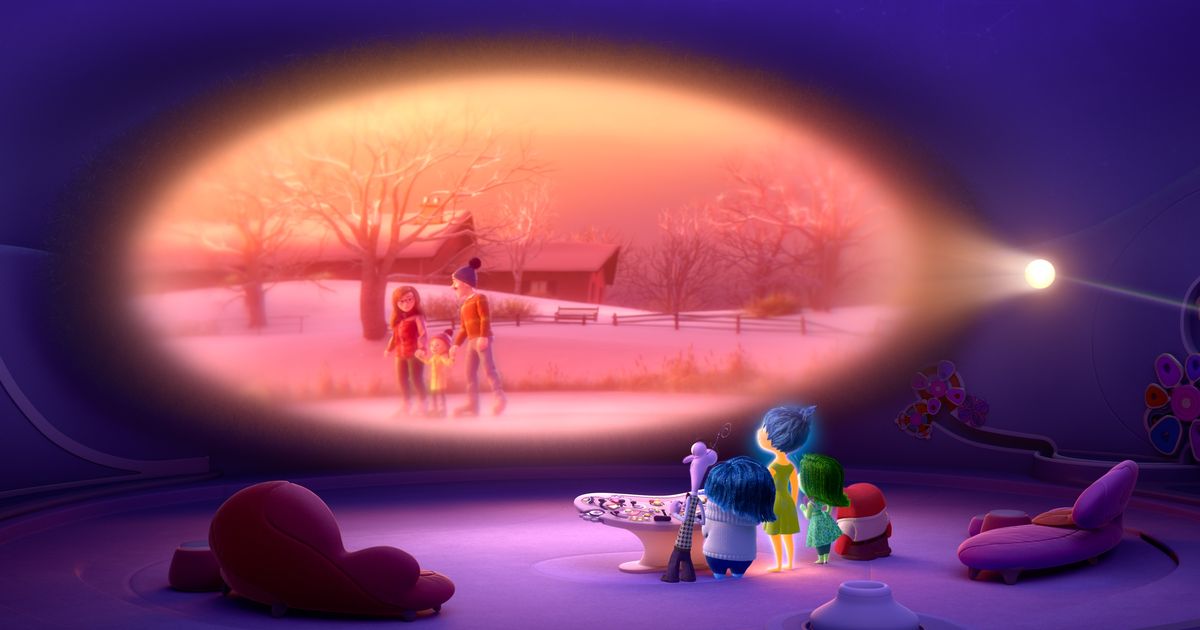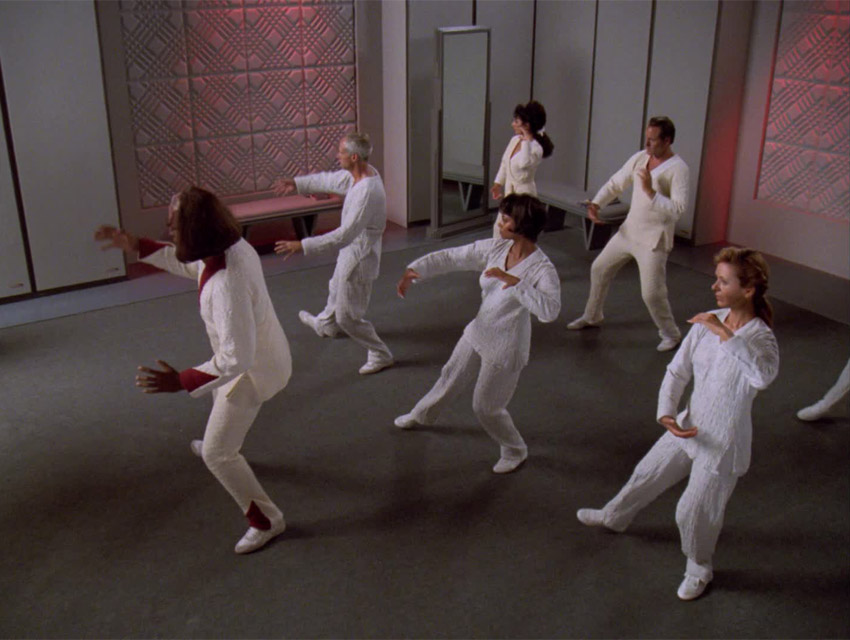This week we watched Disney’s Inside Out and Star Trek Season 6, Episode 3 “Man of the People”. Both texts cover how emotions are inseparable from out cognitive systems and how emotions aren’t something that merely happens to us but are something that we create within ourselves.

In general, I don’t watch a lot of PIXAR movies which is really weird because I always end up crying over each movie during and after I’ve watched them. Recently, it was Inside Out and Soul that have made me cry like that. And they’re not even sad tears, they’re tears of resonance followed by neck and body chills.
Anyways, Inside Out follows a group of sentient emotions that live within the brain of Riley, who is experiencing a lot of new and varying feelings throughout the course of the film. The one thing I took notice of was how the character of Sadness was represented through out the film. I feel like PIXAR movies always try and touch on different important aspects of life that aren’t spotlighted on enough in this day in age. In this case, Sadness is represented as being suppressed by the other emotions. Joy, being Sadness’s contrasting counterpart, is seen trying to put down  Sadness and thinks there is no room or even necessity for Sadness within Riley’s “emotional headquarters”. I feel in today’s society, Sadness is almost an emotion used when you’ve reached a breaking point. In other words, you can be joyful or angry or even fearful with a snap of a finger but everyone’s sadness is so repressed and hidden. For instance, when was the last you cried in public? We see from the classroom scene, Fear is afraid of people casting judgement onto Riley as she stands up infront of the class and introduces herself. She begins to cry while looking back at memories from Minnesota and the Fear emotion kicks in as its embarrassing almost to cry in front of people, which is an unfortunate stigma in today’s world.
Sadness and thinks there is no room or even necessity for Sadness within Riley’s “emotional headquarters”. I feel in today’s society, Sadness is almost an emotion used when you’ve reached a breaking point. In other words, you can be joyful or angry or even fearful with a snap of a finger but everyone’s sadness is so repressed and hidden. For instance, when was the last you cried in public? We see from the classroom scene, Fear is afraid of people casting judgement onto Riley as she stands up infront of the class and introduces herself. She begins to cry while looking back at memories from Minnesota and the Fear emotion kicks in as its embarrassing almost to cry in front of people, which is an unfortunate stigma in today’s world.


One other scene I would like to look at, briefly, is the scene pertaining to the creation of core memories. This is an example of the Theory of Social Construction. Each memory within Riley’s core memory bank are joyful memories but towards the end of the film, we see that even the most joyful memories are created through the other emotions. The particular memory in this  case is Riley’s memory of the aftermath of losing the big hockey game. She’s sitting on a tree limb with her parents comforting her. All this time, Joy though the ending of this memory, which involves Riley being paraded and cheered at by her teammates under the trees was a core memory of joy but in reality it was a core memory of sadness turning into joy, not one or the other.
case is Riley’s memory of the aftermath of losing the big hockey game. She’s sitting on a tree limb with her parents comforting her. All this time, Joy though the ending of this memory, which involves Riley being paraded and cheered at by her teammates under the trees was a core memory of joy but in reality it was a core memory of sadness turning into joy, not one or the other.
In the Star Trek episode, “Man of the People”, the crew of the Enterprise recieve a distress call from a transporter ship called “The Dorian” which is carrying a Lemurians Ambassador named Ves Alkar and his supposed “grandmother”. We later learn that his “grandmother” is actually a 30 year old victim of Alkar’s negative emotions. One thing I would like to take notice of was the fact that Lieutenant Worf is seen teaching a mok’bara exercise class (which is essentially Klingon Tai Chi) with Deanna Troi and Ves Alkar attending. Mok’bara, in the Klingon Culture (not to nerd out or anything) is a technique similar to meditiation–it is used to both clear the mind and phsyical protection (Mok’bara is the basis of Klingon hand-to-hand combat). Aside from the fact that watching Worf teach a meditation class is seemingly hilarious and contrasts to his more serious Klingon maneurisms, Mok’bara works as a contrast to Alkar’s funeral meditation. Alkar’s funeral meditation highlights the fact that Alkar is an “energy vampire” of sorts. Where Worf meditation works to clear the mind and protect yourself, Alkar’s meditation is works to lower your defenses and allow him to inflict his negative emotions onto you. Being that Troi is an empath, this means that she is more vulnerble to attacks of this nature as well as being more effected by them.
out or anything) is a technique similar to meditiation–it is used to both clear the mind and phsyical protection (Mok’bara is the basis of Klingon hand-to-hand combat). Aside from the fact that watching Worf teach a meditation class is seemingly hilarious and contrasts to his more serious Klingon maneurisms, Mok’bara works as a contrast to Alkar’s funeral meditation. Alkar’s funeral meditation highlights the fact that Alkar is an “energy vampire” of sorts. Where Worf meditation works to clear the mind and protect yourself, Alkar’s meditation is works to lower your defenses and allow him to inflict his negative emotions onto you. Being that Troi is an empath, this means that she is more vulnerble to attacks of this nature as well as being more effected by them.
Throughout the episode, we see Deanna Troi changing and acting different due to being inflicted by Alkar’s emotions. She’s more seductive and abrasive where she usually is very calm and empathic. I feel it is important to notice that Alkar’s victims growing old represent their core emotional feelings being sucked out of the body, very much how, in Inside Out, with absence of the Joy and Sadness, Riley is left feeling more frustrated and “not her self”.



























